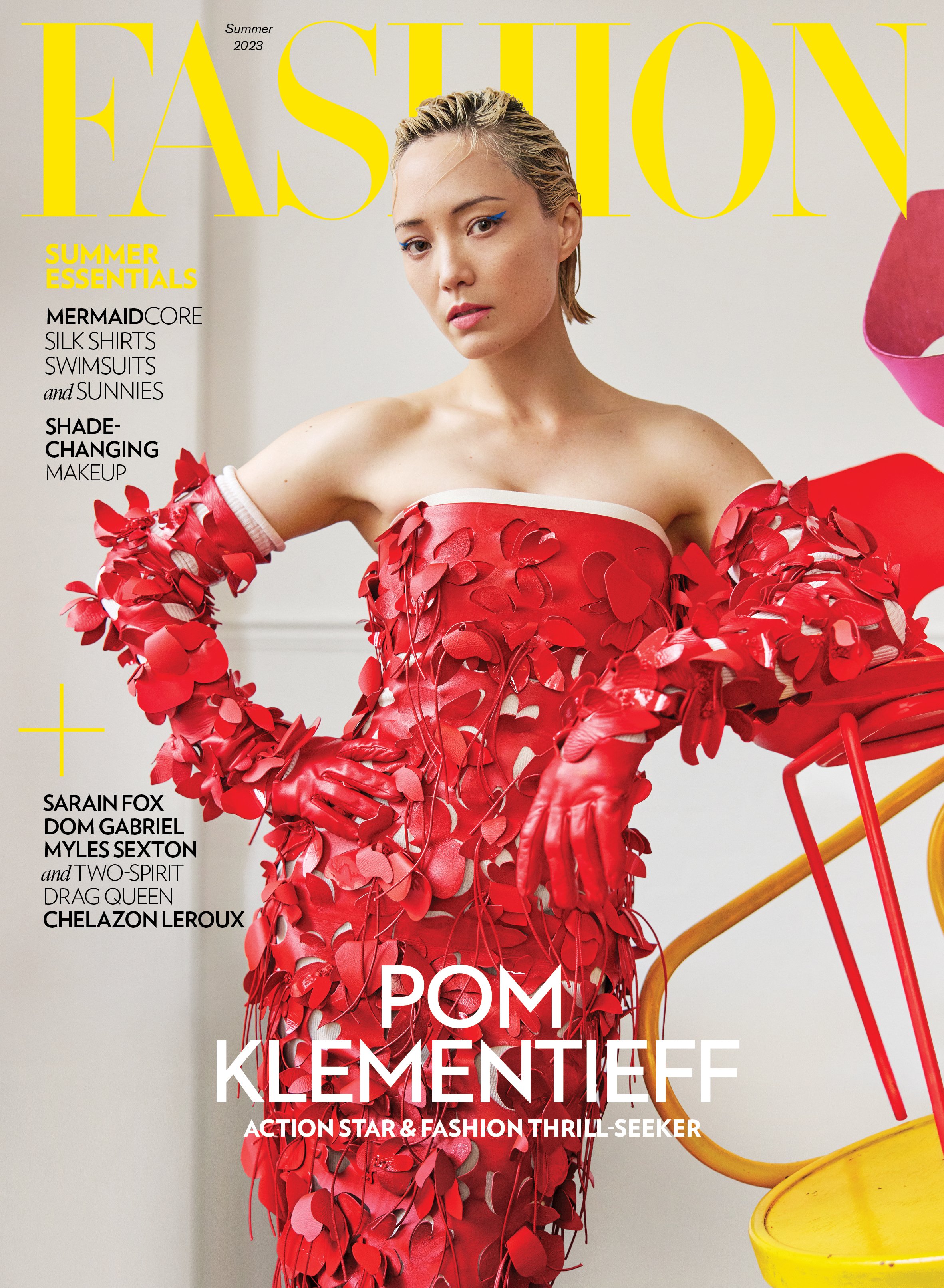How to Identify Your Curl Pattern
Plus all the best products and styling tips for each type
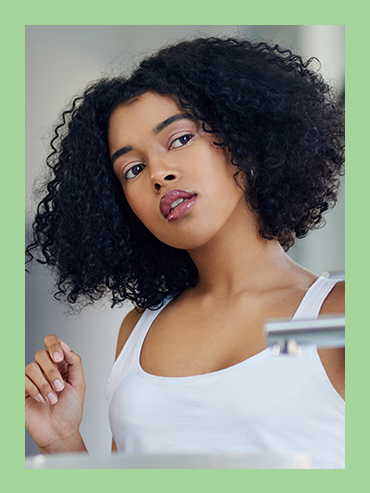
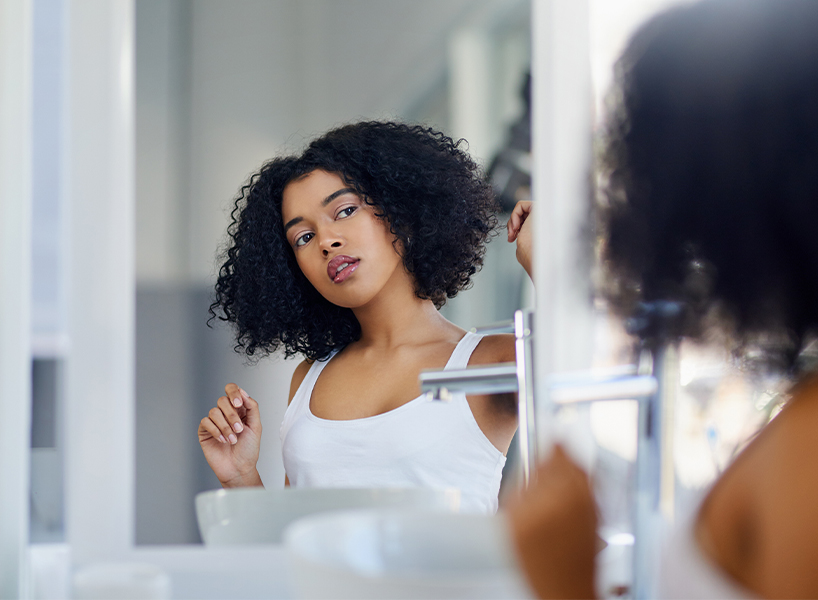
Curls are a true gift from the hair gods, but that coveted bounce and perfect definition aren’t a #wokeuplikethis style. Yep, glorious curly hair makes you work for it. Another thing: We’re not just dealing with one big textured category. Curls are broken down into three main groups—wavy, curly and coily—referred to as types 2, 3 and 4, (type 1 hair pretty much has no curl pattern—a.k.a. straight) and then there are sub-classifications within those—A, B and C—which point to how tightly wound your curls are within that curl family.
With each classification comes a whole different set of behaviours—and styling products that best define it. The most important thing you can do for achieving a flawless head of spirals is to understand your curl pattern by identifying the shape that your hair strands make so that you know how to work with, not against, your hair’s natural movement.
So, how do you do that? First, wash, condition and allow for your hair to air dry. When your hair is still soaking, use a basic tee or a microfibre towel to blot excess moisture. (These softer fabrics won’t ruffle the hair’s cuticle the way a traditional towel can.) Avoid styling products or heat at this stage, because you’ll temporarily alter your true pattern. And avoid brushing and combing, too—doing so can stretch out your hair. Once it’s mostly dry, isolate a section and observe how your hair lays. Does it slightly curve, wind around itself into spirals or kink?
How to identify type 2 hair: Wavy
The most subtle of curls, waved hair ranges from loose curves that stick close to the head, to more defined S-shaped strands starting all the way at the roots. 2A strands are not quite straight, but the waves are not fully defined either. The barely-there tousled texture also tends to be fine in density, which means a smaller width or diameter of the actual hair strand. If your hair forms defined S-shaped waves starting from the midlength, then you have type 2B texture, and 2C waives are thicker, coarser and have well-defined S-bends starting from the root.
Celebrities with type 2 hair
2A: Arizona Muse
https://www.instagram.com/p/B2YeQ4JlToX/
2B: Lorde

2C: Sarah Hyland
https://www.instagram.com/p/B1zAckWliqC/
Styling Type 2 Hair
“With waves, they can really easily be weighed down,” says New York-based editorial hairstylist and Dyson global styling Ambassador Jawara Wauchope. To coax the best definition, the textured-hair guru, whose work has topped the heads of Solange Knowles and Naomi Campbell, recommends using lighter weight products that are formulated specifically to enhance a tousled-hair look (think: beachy waves as opposed to springy curls) to keep strands lifted, like texturizing salt sprays and mousses.
Also, be cautious of oil-based formulas that, more often than not, cause waves to fall flat. “I find with wavier textured hair, it’s really important to use more water-based products,” notes Keina Morgan, a Toronto-based hairstylist and salon owner of Urban Curls Hair Studio. When applying styling aids, the common tendency is to start at the crown of the head and work your way down, but too much product at the roots can definitely weigh you down, especially when working with a wavier texture.
To avoid any product overload, “I like to put [product] on the hands and pull it through starting at the bottom, little by little,” shares Wauchope. “So just taking a piece of the hair and raking it through from the bottom with my fingers, without touching my palms.”
L’Oréal Paris Stylista #BeachWaves Texturizing Mist, $9, drugstores
Moroccanoil Beach Wave Mousse, $35, sephora.ca
How to identify type 3 hair: Curly
Naturally well-defined and full of volume, this type of pattern is characterized by strands that vary from bouncy S-shaped curls (these aren’t the loose, stretched curves of type 2, but rather more compact) to tight corkscrews. When talking curl circumference, think of spirals the width of a wine-bottle cork (3A), springy ringlets similar to a Sharpie marker (3B) and denser, coarser curls that mimic the width of a straw or pencil (3C) as the hallmarks that define type 3 curls. And the more tightly wound, the harder it becomes for natural oils from the scalp to travel down the hair shaft, leaving curls in this texture category regularly crying out for moisture. “Hair tends to feel drier a lot faster because with every bend and turn in the hair, the cuticles are more opened,” says Morgan. What’s more, type 3 curls typically experience extreme shrinkage and are more prone to tangling, which can lead to excess breakage. (Note: Although undesirable to many, shrinkage is a positive indicator of healthy curls; it shows that your hair is properly moisturized and has strong elasticity—a.k.a. good bounce back from tugging and pulling which helps eliminate breakage.)
Celebrities with type 3 hair
3A: Zendaya
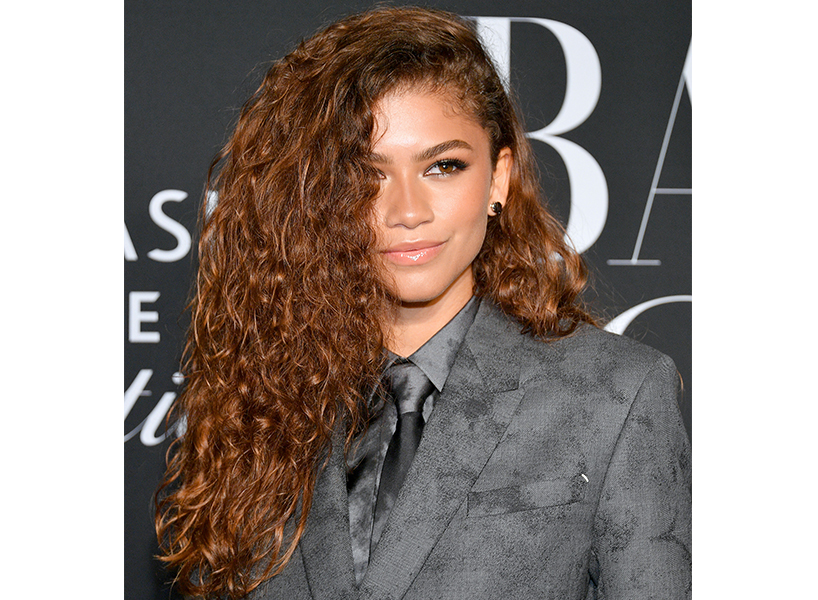
3B: Tracee Ellis Ross

3C: Yara Shahidi

Styling type 3 hair
Regular scheduled trims to avoid raggedy split ends, the main culprit of what tears your hair out, are necessary to help maintain healthy-looking lengths. “[Shrinkage] makes people with type 3 patterns not want to trim their hair as often, but the idea is, if you trim your hair, it definitely won’t tangle as much, and it will allow for less product for you to use while detangling because it’s easier to get through,” explains Morgan.
When it comes to selecting a styling aid, the options are bountiful. “What I love and appreciate about type 3 curls is that they can use water-based products or oil-based products—it really depends on the desired look,” she says. If you experience a lot of shrinkage and desire more length from your mane, Morgan recommends reaching for thicker, gel-based stylers, which are formulated to really control and set the hair. And word to the wise: Stay away from gels with moisture-sucking alcohol that will leave you stuck with crunchy, stiff hair. Instead, look for a curling gel loaded with powerful hydrating botanical ingredients, like conditioning aloe, says Morgan. One of her go-tos: Kinky Curly Custard Gel. If you prefer an elongated curl with softer, more voluminous definition, opt for curling creams, like DevaCurl Super Stretch Cream, as cream-based stylers generally provide a lighter hold than gels, she adds.
“I like Cantu for curls as well,” shares Wauchope, who’s a lover of the brand’s shea butter-packed Cantu Natural Hair Wave Whip Curling Mousse for type 3 curls.
Kinky Curly Custard Gel, $43, clorebeauty.com
DevaCurl Super Stretch Coconut Curl Elongator, $41, sephora.ca
Cantu Shea Butter for Natural Hair Wave Whip Curling Mousse, $14, walmart.ca
How to identify type 4 hair: Coily
In a gravity-defying class of its own, coily hair—which is often referred to as Afro-textured—has the tightest, smallest curl circumference in the game. Some manes follow a super-defined S pattern, while others ultimately have no uniform texture at all. “[The hair] zigs, it zags, and it curls at some point along the hair shaft. [There’s] not a consistent curl that goes along the hair shaft all the way down,” says Morgan.
4A strands are recognizable by their S-shaped pattern, like with type 3, but the width is even smaller, similar to the size of a crochet needle. Densely packed and springy, 4B curls on the other hand start to bend in a sharp Z-shaped pattern, while 4C coils’ shape can be so zigzagged, the curl definition can sometimes be impossible to make out with the eye. And because of how naturally tight type 4 texture is, curl shrinkage is inevitable here. It’s also the most fragile curl family, as coily hair is very prone to single-strand fairy knots and breakage. All of which means that this curl pattern has a high demand for hydration and TLC, including regular trims.
Celebrities with type 4 hair
4A: Yaya Dacosta
https://www.instagram.com/p/BuO9gSJj-tm/
4B: Issa Rae

4C: Lupita Nyong’o
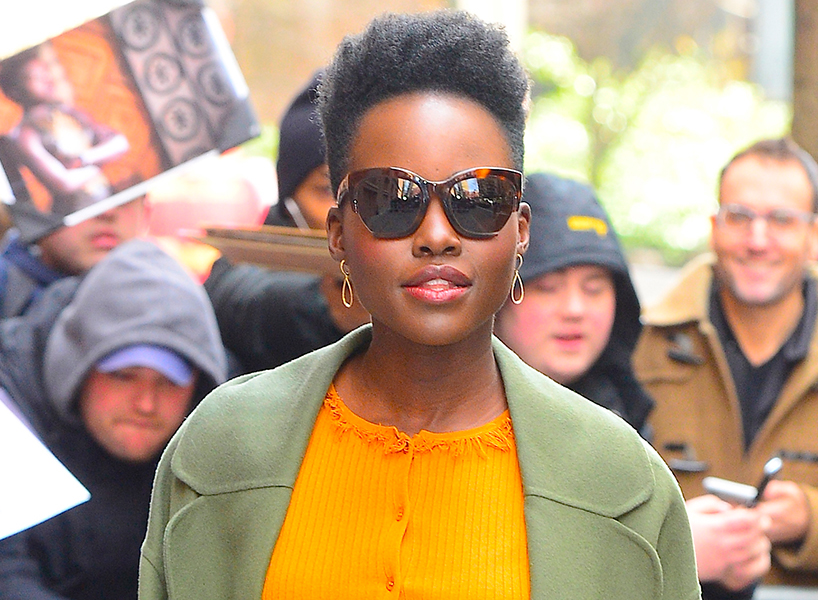
Styling type 4 hair
Like type 3 curls, type 4 hair can play around with different moisture-boosting styling aids, from lightweight gels to richer creams and butters. But if your coils are low in porosity, know that it can be harder to inject moisture into the hair shaft. In a nutshell, hair porosity is how well your mane absorbs and retains water, and the more tightly-bound and compact the cuticle layers, the less porous your hair typically is, which means strands don’t open up as easily to allow hydration in or out. This can lead to heavier products sitting on and building up on the hair instead of penetrating it. How on earth can you determine if you have low porosity? The simplest way to test your hair at home is the float test, which requires taking a couple strands of clean hair (like those that have shed during combing) and dropping them into a glass of water. If the hair floats, even after several minutes, you have low-porosity hair.
“If you’re doing a wash-and-go style, it’s better to use products with a thinner viscosity to absorb into that curl pattern,” says Morgan, who recommends opting for a nourishing strong-hold gel, like Earthtone Naturals’ aloe-packed Curl Define Curl Enhancing Gelly, versus thicker creams. To maximize coily hair’s curl pattern and volume, Morgan advises applying stylers to soaking wet hair in sections and distributing the product evenly through coils by finger-raking from root to tip.
Another tried-and-true method for achieving incredible definition on a less-defined curl pattern is the two-strand twist out technique, shares Morgan. Beloved by the natural hair community for creating tight ringlets to larger curls, the protective hairstyle boosts a curling aid’s ability to better saturate the hair and lock in moisture.
And both hair stylists are in agreement that a good finishing oil that’s made to smooth strands and further intensify hair’s hydration levels is a must-use on dry hair between wash days. Morgan is a fan of oil treatments infused with Jojoba oil, she says, while Wauchope enjoys concocting his own coily hair elixirs using Jamaican black castor seed oil as his base, he reveals.
Earthtone Naturals Curl Define Curl Enhancing Gelly, $13, earthtonesnaturals.com
Earthtone Naturals Curl Replenish Revitalizing Scalp and Hair Oil, $16, earthtonesnaturals.com
Tools for success
Blow dry with strategy
No matter your texture, letting curls air dry after applying styling products is your best bet for maintaining the health of your hair. Due to all of its twists and turns, the cuticle of a curly hair shaft naturally lifts at certain spots, exposing the internal structure of the hair fibre. These gaps means curls are much more vulnerable to experiencing damage and severe moisture loss caused by heat-styling compared to straight hair where the cuticle lays flat.
But the reality is that some curl types can take hours to dry on their own, which isn’t ideal when stepping outside, especially during the colder months: Subzero temps and damp hair create a breeding ground for breakage. So if you’re going to turn up the heat to speed things up, one of the most important tools is a diffuser attachment, which works to disperse a blowdryer’s airflow so curls dry evenly and remain intact—plus it encourages more volume. And reminder: Gentle and steady wins the frizz-free race. “You want to use a warm, low setting with the diffuser head—never high and hot—and you want to keep it in one spot as [hair] dries before you move onto the next section,” says Morgan.
Dyson Supersonic Hair Dryer and diffuser attachment (included in box), $500, dysoncanada.ca
Stay protected
The absolute worst is having a glorious hair day—all of your time, effort and products did what they were supposed to do—and then going to sleep, only to wake up with a flattened mess. To help preserve your texture overnight, wrapping your hair with a bonnet, turban or scarf made out of either satin or silk, should be a bedtime ritual.
If your hair has some good length to it, try pulling it up to the top of your head before wrapping the base of your updo with a long scarf. “You can [create] a samurai bun, or a pineapple roll on top of your head to bundle the curls,” recommends Morgan. If you hair is on the shorter side, stick to a bonnet or turban.
Being conscious of your pillow coverings is also key to reducing frizz-inducing friction while you’re tossing and turning in your sleep. “A satin pillow case is also very helpful to preserve curls overnight,” adds Morgan.
Evolve Essentials Satin Pineapple Sleep Cap, $9, clorebeauty.com
Uxcell 2 Pack Silk-satin Pillowcase, $10, amazon.ca

